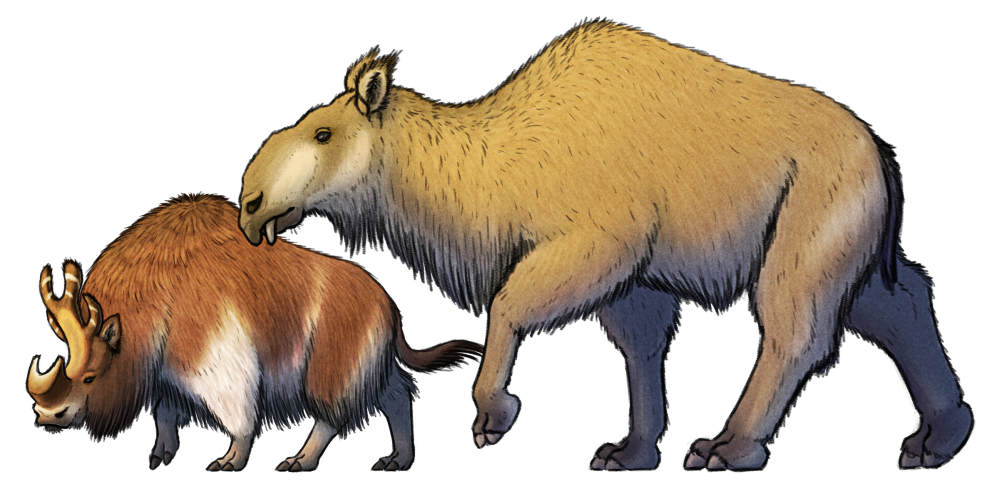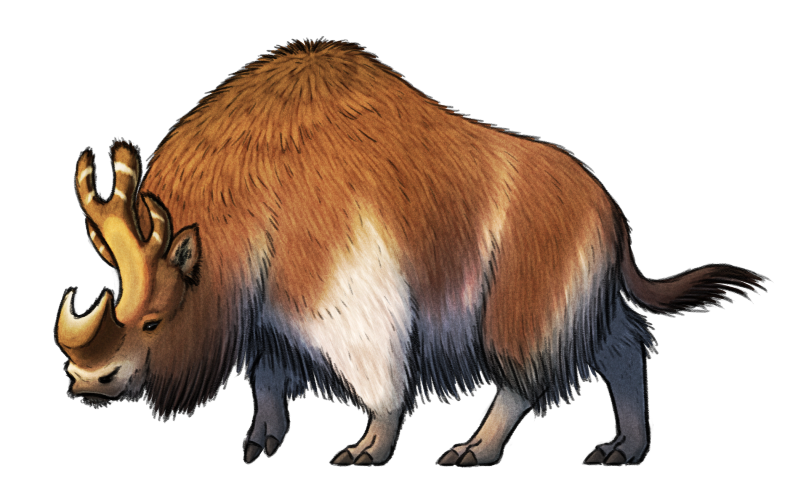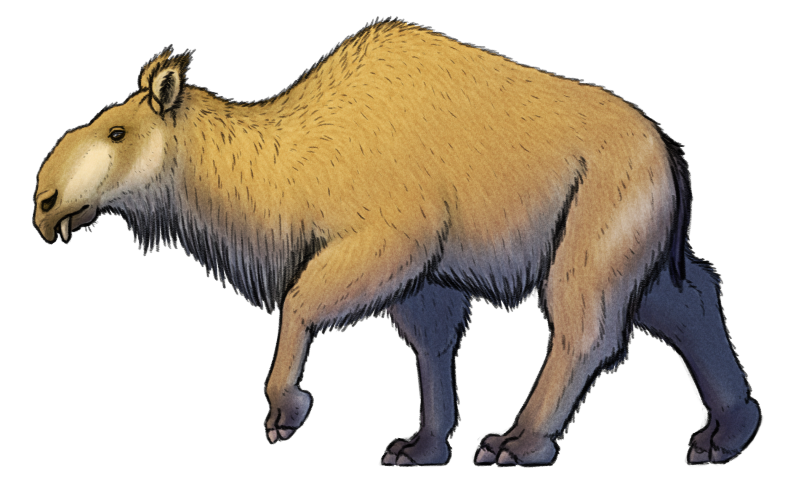Today’s #Spectember concept is a combination of a couple of anonymous submissions:

These two animals are the descendants of brontotheres and paraceratheres, almost the last living representatives of their kinds, hanging on in the equivalent of modern-day times in a world similar to our own.
But in this timeline some of the North American brontotheres managed to cope with the cooling drying climate of the Oligocene, adapting their teeth and their diet to grazing the spreading scrublands and grasslands. They became smaller and somewhat less bulky, built more like tapirs or wild boars than their previous rhino-like forms, and although they were now able to move faster in the more open environments their main defense was actually their highly social herding behavior – relying on strength in numbers and collectively mobbing predators.
Males also developed increasingly elaborate head ornamentation, like mammalian versions of ceratopsids, with ossicone-like projections on the back of their skulls as well as on their noses.
But they never regained their kind’s previous success or diversity, instead remaining as a fairly minor element of the North American plains fauna. They began to decline against the rise of more specialized ungulates and smarter pack-hunting carnivorans, but one lineage did manage to disperse into South America during the Great American Biotic Interchange before the remaining North American brontotheres died out entirely.

Now the crowned brontothere (Brontochlos coronatus) is one of the last remnants of the whole group*, living in the Patagonian Steppe of southern South America. A relict species from the last ice age, under its thick coat of hair it’s only about the size of a sheep – around 1m tall (3’3″).
(*There is one other still-extant lineage of brontotheres in this world, but that’s a subject for another time.)
Meanwhile the Asian paraceratheres survived and went through a similar shift towards tougher diets and smaller body size. No longer the titans they once were, they never again exceeded the size of the largest horses and instead converged on camelids and macraucheniids.
They reached North America via Beringia in the late Miocene, but struggled to establish themselves alongside the native camelids at the time – and the later camel dispersal into Asia would eventually push the remaining paraceratheres there towards extinction, too. But, much like the brontotheres, a few paraceratheres did make it all the way down into South America and persisted for longer, taking advantage of the ecological vacancies left by the already-dwindling native ungulates.

The woolly paracerathere (Ebursonora glacialis) is one of the last paraceratheres, sharing the same Patagonian Steppe habitat as the crowned brontotheres. Just under 2m tall (6’6″), it has a highly prehensile upper lip and a large bulbous nasal cavity that acts as both a saiga-like air filter and as a resonating chamber.
Despite sometimes competing with each other for the same food resources, these two species have developed something of a mutualistic relationship with each other. The social crowned brontotheres will often incorporate one or two woolly paraceratheres into their herds – often young “solitary” males of the species – due to the paraceratheres’ larger size and better ability to spot threats at a distance. In exchange for acting as an early warning system, the paraceratheres gain the protection of the whole brontothere mob, increasing their own survival odds in a harsh environment still stalked by sabertoothed cats and the occasional terror bird.
